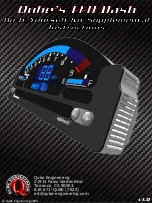
Black plate (20,1)
GMC Savana Owner Manual - 2013 - 2nd Edition - 9/25/12
3-20
Seats and Restraints
It depends largely on what you hit,
the direction of the impact, and how
quickly the vehicle slows down.
Frontal airbags may inflate at
different crash speeds. For
example:
.
If the vehicle hits a stationary
object, the airbags could inflate
at a different crash speed than if
the vehicle hits a moving object.
.
If the vehicle hits an object that
deforms, the airbags could
inflate at a different crash speed
than if the vehicle hits an object
that does not deform.
.
If the vehicle hits a narrow object
(like a pole), the airbags could
inflate at a different crash speed
than if the vehicle hits a wide
object (like a wall).
.
If the vehicle goes into an object
at an angle, the airbags could
inflate at a different crash speed
than if the vehicle goes straight
into the object.
Thresholds can also vary with
specific vehicle design.
Frontal airbags are not intended to
inflate during vehicle rollovers, rear
impacts, or in many side impacts.
Single Stage vs. Dual Stage
Airbags
Depending on the weight of the
vehicle, you will have either
“
Single
Stage Airbags
”
or
“
Dual Stage
Airbags.
”
Vehicles that have a
passenger sensing system also
have dual stage airbags. See
Passenger Airbag Status Indicator
on page 5
or
.
If the GVWR (Gross Vehicle Weight
Rating) of the vehicle is 3 855 kg
(8,500 lb) or above, the vehicle may
have single stage airbags. If the
GVWR is below 3 855 kg (8,500 lb)
then the vehicle may have dual
stage airbags. You can find the
GVWR on the certification label on
the rear edge of the driver door. See
for more information.
Dual-stage airbags adjust the
restraint according to crash severity.
The vehicle has electronic frontal
sensors, which help the sensing
system distinguish between a
moderate frontal impact and a more
severe frontal impact. For moderate
frontal impacts, dual-stage airbags
inflate at a level less than full
deployment. For more severe frontal
impacts, full deployment occurs.
The vehicle may or may not have
roof-rail airbags. See
. Roof-rail airbags are
intended to inflate in moderate to
severe side crashes. In addition,
these roof-rail airbags are intended
to inflate during a rollover. Roof-rail
airbags will inflate if the crash
severity is above the system's
designed threshold level. The
threshold level can vary with
specific vehicle design.
Roof-rail airbags are not intended to
inflate in frontal impacts, near-frontal
impacts, or rear impacts. All roof-rail
airbags will deploy when either side
of the vehicle is struck.
Summary of Contents for 2013 GMC Savana
Page 6: ...Black plate 6 1 GMC Savana Owner Manual 2013 2nd Edition 9 25 12 vi Introduction 2 NOTES ...
Page 102: ...Black plate 2 1 GMC Savana Owner Manual 2013 2nd Edition 9 25 12 4 2 Storage 2 NOTES ...
Page 154: ...Black plate 8 1 GMC Savana Owner Manual 2013 2nd Edition 9 25 12 6 8 Lighting 2 NOTES ...
Page 190: ...Black plate 8 1 GMC Savana Owner Manual 2013 2nd Edition 9 25 12 8 8 Climate Controls 2 NOTES ...
Page 338: ...Black plate 90 1 GMC Savana Owner Manual 2013 2nd Edition 9 25 12 10 90 Vehicle Care 2 NOTES ...
Page 343: ...Black plate 5 1 GMC Savana Owner Manual 2013 2nd Edition 9 25 12 Service and Maintenance 11 5 ...
Page 345: ...Black plate 7 1 GMC Savana Owner Manual 2013 2nd Edition 9 25 12 Service and Maintenance 11 7 ...
Page 362: ...Black plate 6 1 GMC Savana Owner Manual 2013 2nd Edition 9 25 12 12 6 Technical Data 2 NOTES ...
















































